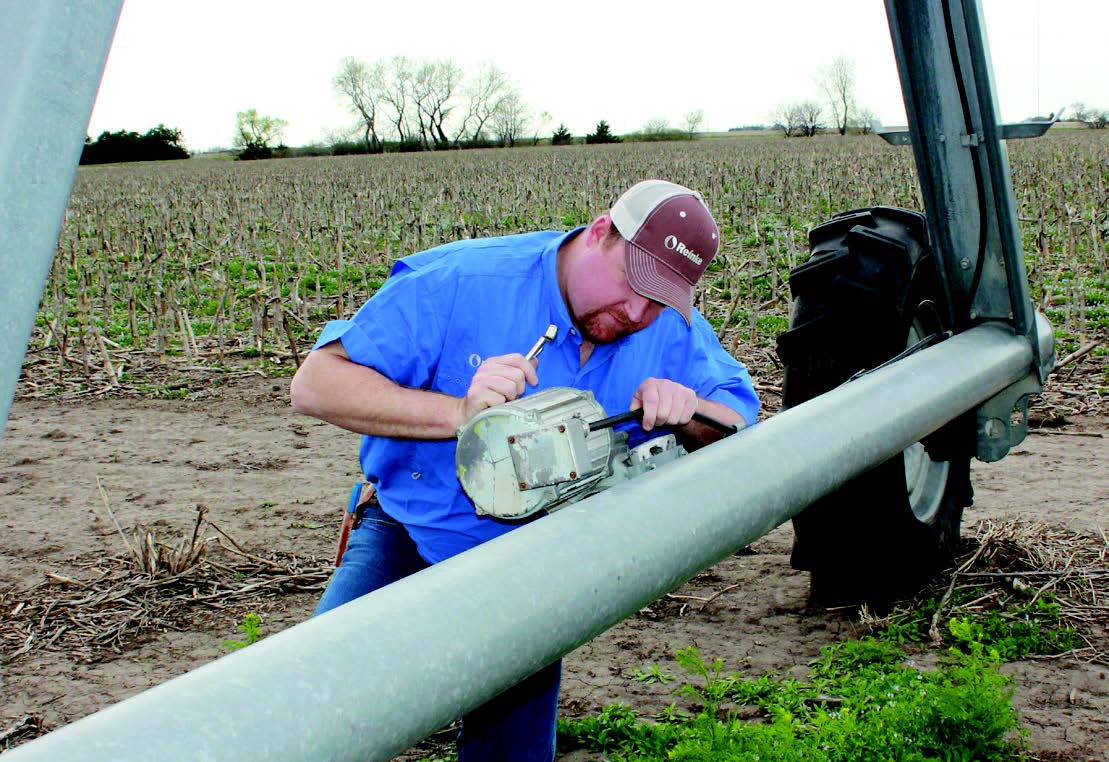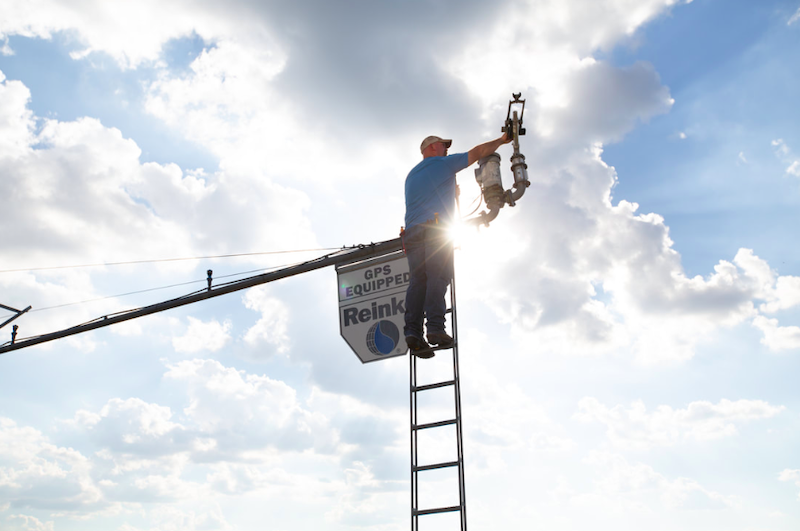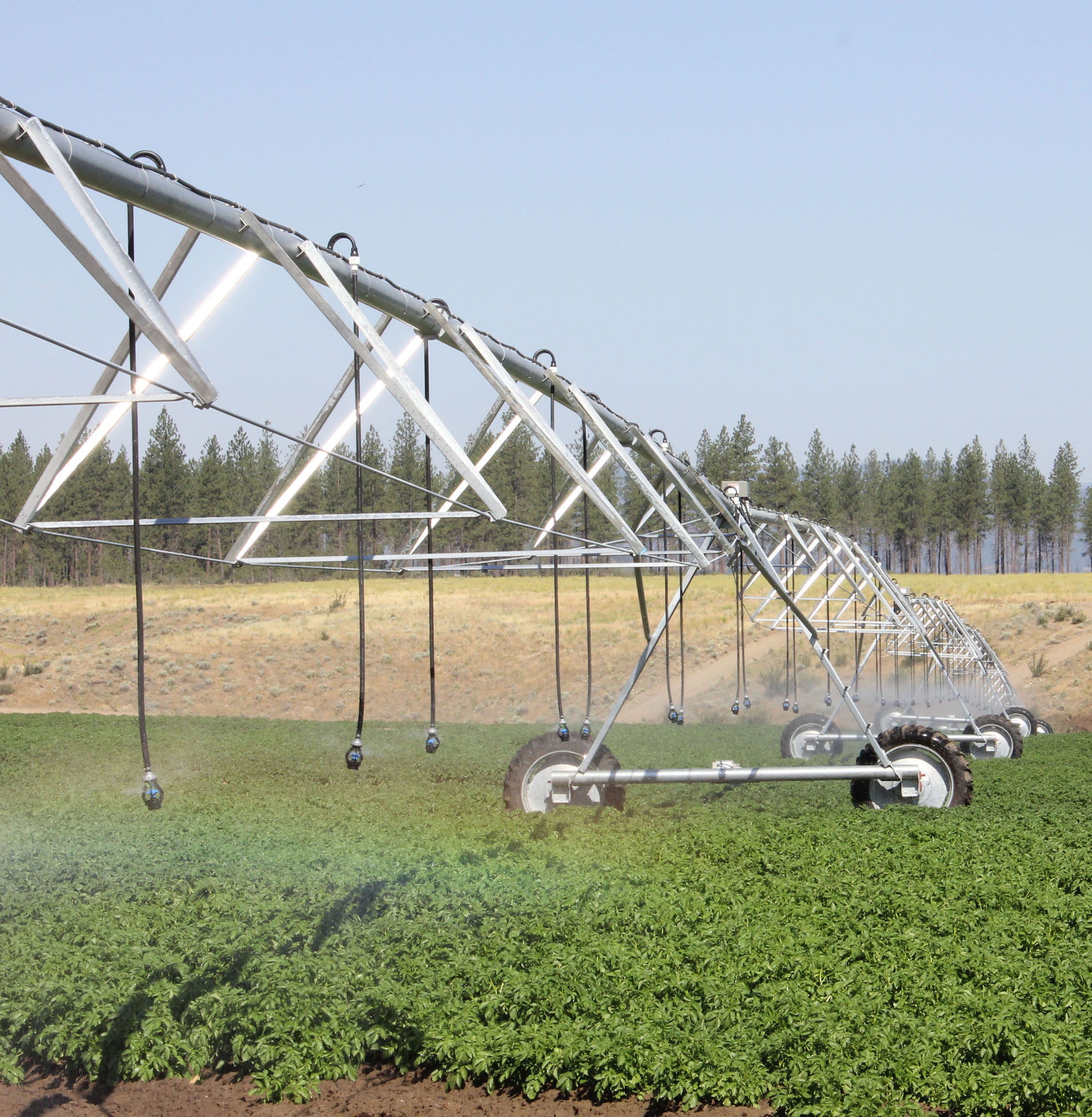This article appears in the April 2020 issue of Potato Grower.
As a farmer, you have a number of things on your mind as you prepare for another growing season. Will I be able to get out into my fields when I want this spring? Will planting go smoothly this year? Are the farmhands ready to get going?
One more question should come to your mind: Are my center pivots prepared for the work they will need to do for me this year?
Center pivots are vital to your operation’s overall success. And like the other farm machinery you own, they are a substantial investment that has to perform when you need it to. But unlike your other machinery, pivots don’t spend the winter sheltered in a shed or barn. Instead, they sit out in the elements for 365 days a year. To ensure your pivots are ready to perform, preseason preventative maintenance is crucial to hit the ground running this growing season.

The View from Eastern Washington
Having grown up on a farm in eastern Washington, John Klingeman has been around irrigation his entire life. In that region, considered high desert land, farmers only see an average of 12 inches of rain each year. Most of the precipitation comes in the winter, so they depend a great deal on irrigation.
“If we get a half-inch of rain at once, we consider that a large rain event,” Klingeman said. “Farmers in our area are very dependent on their irrigation systems, putting a lot of hours each year on all of their irrigation equipment.”
 For the past 16 years, Klingeman has helped farmers at Skone Irrigation in Warden and Pasco, Wash. As the sales manager and a certified irrigation designer at Skone, Klingeman works closely with growers in the region to make sure the right amount of water is going to the right place, at the right time, to produce a successful harvest. Over the years, Klingeman has seen preventative maintenance—performed during preseason pivot checks—save farmers both time and money in the long run.
For the past 16 years, Klingeman has helped farmers at Skone Irrigation in Warden and Pasco, Wash. As the sales manager and a certified irrigation designer at Skone, Klingeman works closely with growers in the region to make sure the right amount of water is going to the right place, at the right time, to produce a successful harvest. Over the years, Klingeman has seen preventative maintenance—performed during preseason pivot checks—save farmers both time and money in the long run.
“Downtime is expensive and always seems to happen when a farmer needs to be doing something else besides fixing breakdowns,” says Klingeman. “No one expects to find equipment issues, so preseason preventative maintenance on your irrigation systems are a sound investment that we often see pay off.”
While Klingeman says the majority of farmers they work with do take advantage of servicing their pivots in the spring, there is one thing potato growers want to make sure they keep up-to-date: sprinkler packages.
“Checking that your irrigation sprinkler pressure regulators are in good shape is key to proper water distribution,” he says. “Regulators are good for about 10,000 hours of use. But if they become worn out, that can drastically affect plant growth. Without that preseason check, the quality of your tuber has already been negatively affected by the time anyone may notice an issue.”
Preventative Checks Improve Bottom Line
In order for a potato grower to grow the best possible crop, his irrigation system needs to stay in peak condition. The loss experienced when a piece of equipment fails in the middle of the season is far more costly than preventative care. Reinke Manufacturing reminds farmers about the significance of performing proper inspections of their pivots in order to help their bottom lines.
Consulting the maintenance section of your owner’s manual for all irrigation products helps to ensure the reliability and longevity of every pivot. Many pivot manufacturers, including Reinke manufacturing, offer a warranty that gives farmers the option of working with their local dealer to have a certified technician perform preventative maintenance and use genuine parts for any repairs that may come up.
“Preventative maintenance is the key to providing reliability and longevity of your pivot system, making sure it will run when farmers need it most,” says Todd Merryman, manager of technical services at Reinke,. “And those preseason checks are less expensive than a hurried repair when there are crops in the field going without the water they need.”
Following is a general checklist of the steps a certified Reinke technician can go through each spring to keep irrigation systems operating at peak efficiency. By taking these steps to prevent issues from developing in the first place, farmers can have confidence and peace of mind regarding the system’s reliability:
- Verify the system’s electrical ground
- Look for any structural or electrical hazards
- Check the pivot center
- Check gearboxes (center drive and wheel)
- Check wheels and tires
- Check other drivetrain components
- Check the alignment of the system
- Check the condition of the water-carrying conduit
- Remove the sand trap and thoroughly flush the system with water
Some inspections are done annually, while others should be completed both before and after the growing season. For example, swing arms’ legs and steering gear boxes need to be greased twice a year—once in the preseason and a second time after harvest.
To further extend your irrigation system’s longevity and protect your equipment investment, don’t forget to have postseason maintenance and winterization performed as well at the end of the season.
“Our technicians are trained and ready to assist farmers whenever they need our help,” says Klingeman. “But if we can maintain their irrigation systems and take care of repairs in advance, we want to do that for them.”

For a detailed checklist of preseason irrigation system preventative maintenance, visit www.reinke.com/preseason-preventative-maintenance.
Producers in eastern Washington can visit www.skoneirrigation.com for more information on the products and services available from the Reinke Gold Pride award-winning dealership. Skone Irrigation and John Klingeman can also be reached at (509) 545-8420.